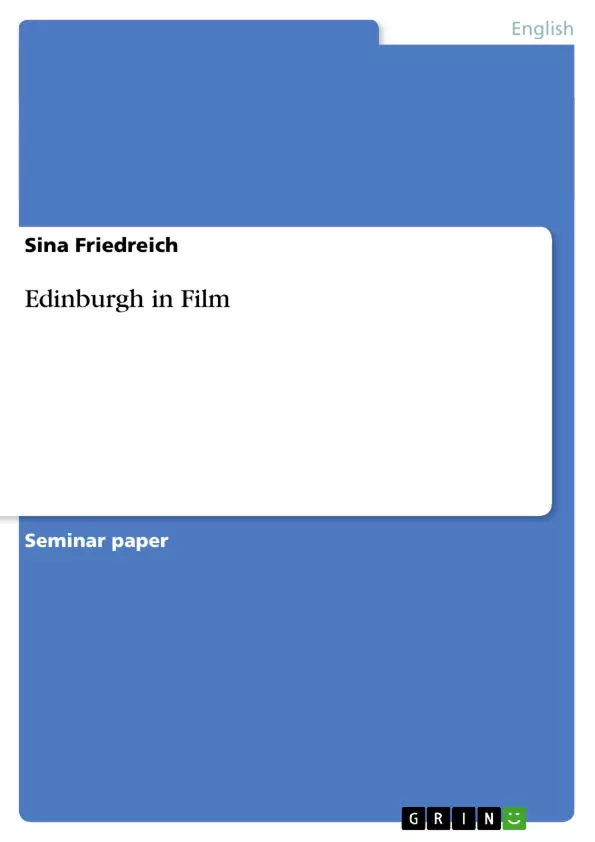The following pages form the first part of my essay on Edinburgh in Film. In the first two chapters, two major film institutions which played an important role in the history of film in Edinburgh shall be introduced. Their importance for the development of film will be pointed out clearly. The third chapter will then deal with the question of how Scotland was portrayed and the reasons for that. To answer this question, the main influences on the depiction of Scotland will be described. The third chapter will subsequently end by describing how the Scots themselves wanted to depict their country and culture.
In presenting famous films and musicals in the final chapter, dualities of Edinburgh and Scotland and their stimulus for productions in and around Scotland shall be depicted.
Inhaltsverzeichnis (Table of Contents)
- PART I
- INTRODUCTION.
- THE EDINBURGH FILM GUILD.
- THE EDINBURGH FILM FESTIVAL...
- SCREENING SCOTLAND
- A TALE OF TWO CITIES.
- REFERENCES
Zielsetzung und Themenschwerpunkte (Objectives and Key Themes)
This essay aims to explore the role of film in shaping the image of Edinburgh and Scotland. It examines the influence of two major film institutions, the Edinburgh Film Guild and the Edinburgh Film Festival, on the development of film in the city. The essay also delves into how Scotland has been portrayed in film, considering the factors that have influenced these portrayals. Finally, it investigates the ways in which Scots themselves have sought to depict their country and culture through film.
- The historical and cultural significance of film in Edinburgh.
- The influence of the Edinburgh Film Guild and Edinburgh Film Festival on Scottish cinema.
- The depiction of Scotland in film, and the factors that have shaped these representations.
- The role of Scottish filmmakers in shaping the image of their country on screen.
Zusammenfassung der Kapitel (Chapter Summaries)
- The first chapter introduces the Edinburgh Film Guild, highlighting its role in the history of film in Edinburgh. The Guild's founding, its growth, and its contribution to the establishment of the Edinburgh Film Festival are discussed.
- The second chapter focuses on the Edinburgh Film Festival, tracing its origins and its significance in the international film scene. The chapter also explores the impact of the festival on Scottish film production.
- The third chapter explores the portrayal of Scotland in film, examining the recurring themes and stereotypes that have been used to depict the country. It discusses how these representations have been shaped by historical events, cultural influences, and the work of filmmakers.
Schlüsselwörter (Keywords)
Edinburgh Film Guild, Edinburgh Film Festival, Scottish cinema, film production, portrayal of Scotland, cinematic representations, cultural influences.
- Citation du texte
- Sina Friedreich (Auteur), 2001, Edinburgh in Film, Munich, GRIN Verlag, https://www.grin.com/document/16751



